Maker Space Makes More Space for Makers
By Rebecca Goldfine
A row of 3-D printers along the wall glide back and forth and left and right, pulling plastic filaments down from spools to build up colorful objects. A few recent "makes" lie nearby, including an oversized dreidel and a miniature replica of the Bowdoin polar bear statue hunched over a Bowdoin-themed wooden chessboard.
Next to the printers, a laser engraver burns a pattern into wood for a customized luggage tag. A student sits at one of the computers with David Israel P’25, learning a software program that sends out design orders to the machines.
Israel, who is is part of Bowdoin's Academic Technology & Consulting team, founded the Maker Space in 2016 with just one 3-D printer he assembled over a weekend. His vision was to build a collaborative environment that took advantage of open-source software and a relatively new technology that puts manufacturing into the hands of anyone.
Since then, the Maker Space "has grown exponentially," he said.

This summer, the Maker Space had its biggest expansion yet, moving into a nearby room in Jewett Hall that doubled its size. It also received funding for new furniture and inherited a consumer-grade laser engraver from another department. A professional-grade laser is on the wish list for the future as it will speed things up dramatically, allowing more students to work with the technology.

Today, along with the laser engraver that cuts and scores any material (wood, fabric, leather, paper), the Maker Space has a dozen 3-D printers, a precision vinyl cutter (that allows students to design their ubiquitous stickers for laptops and water bottles), and equipment to make small-scale electronics. The Academic Technology & Consulting staff also manages the virtual reality and podcasting studio down the hall.
Along with Israel, five student lab instructors staff the space during its walk-in hours. They're ready to assist any student or employee with an idea for a classroom assignment or hobby. Users are not charged a fee if their creations are relatively small.
Israel said the Maker Space has supported classes across the curriculum—from art and classics courses to neuroscience and ecology—and has produced objects for science experiments and plays.
Lab instructor Claire Chen ’26 said she first learned of the Maker Space in her neurobiology class, when Visiting Assistant Professor of Neuroscience Michael Fine encouraged students to make models of the human brain or spinal cord for extra credit.

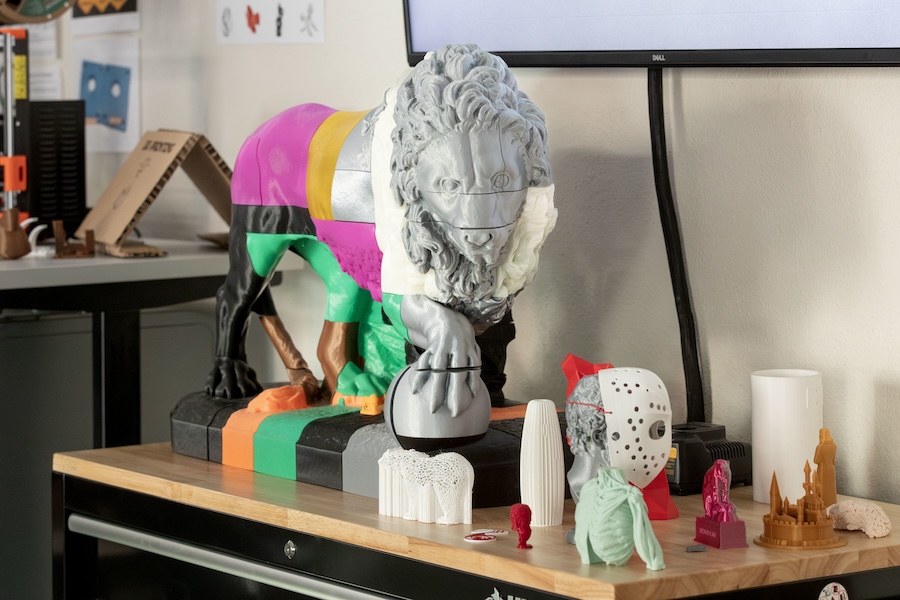
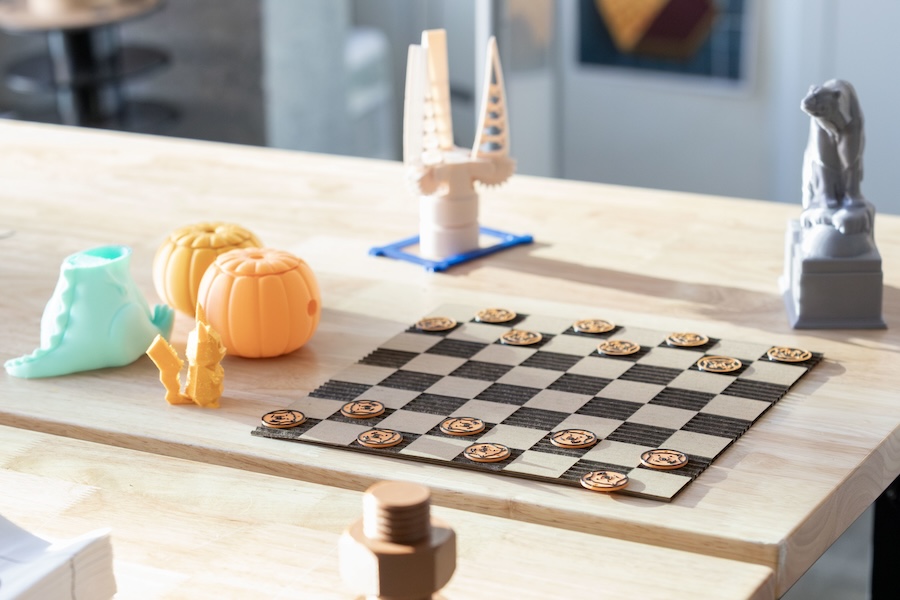
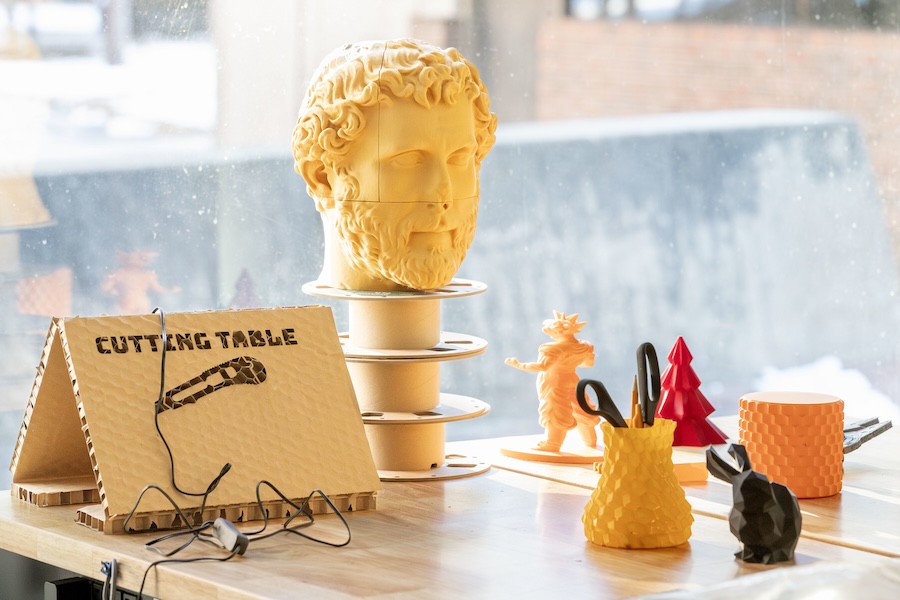
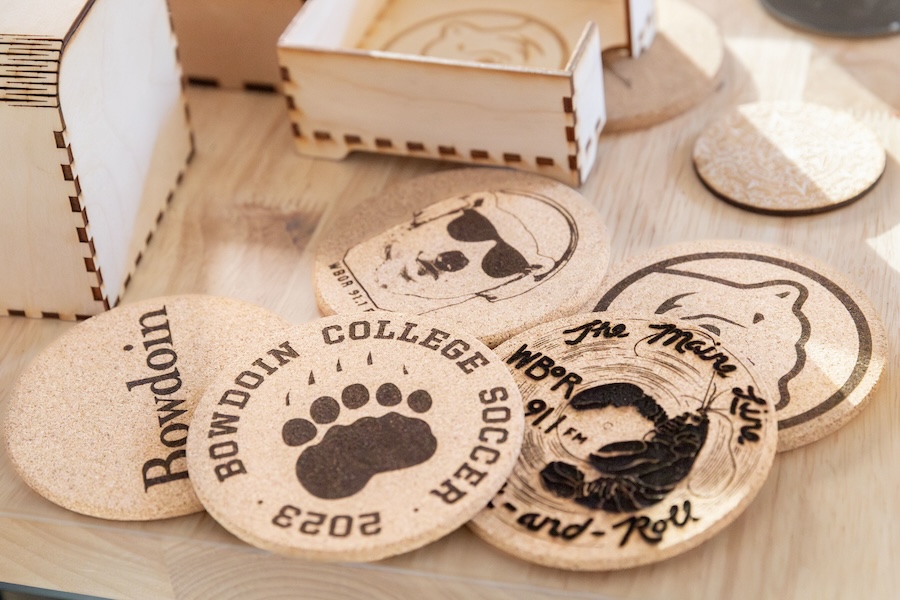
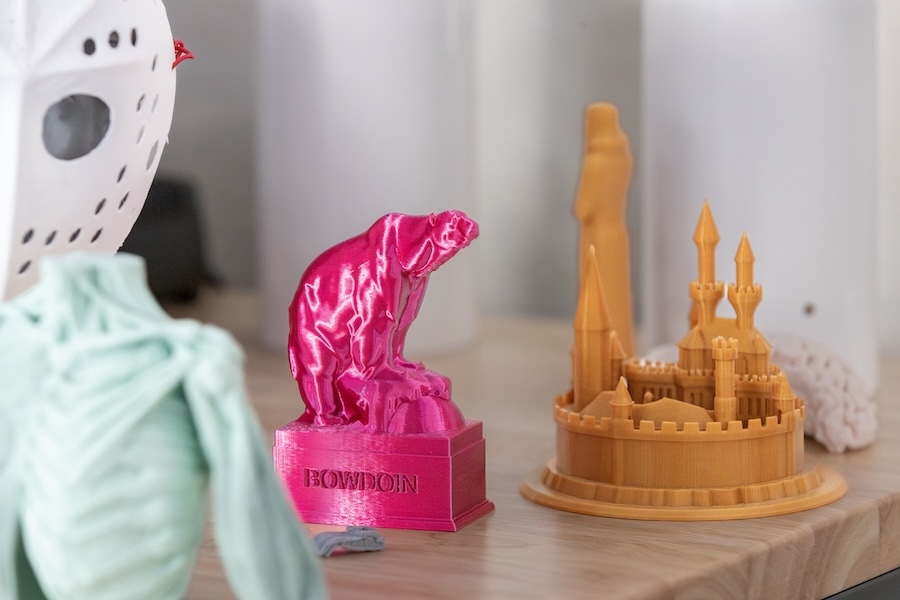
Now in his third year as a Maker Space lab instructor, Shea Tyrrell ’24 said he and his coworkers "train people how to use the machines to help them realize any project they come in with. We expose them to the technology, which is here for them to be creative."
For his own personal project, Tyrrell was in the final stages of finishing a Catan game board, an endeavor that has taken two years. "I have all the main pieces and I'm working on bridges and some of the ocean," he said. Israel, overhearing the conversation, piped up: "Shea also has an unbelievable fleet of spaceships."
“We train people how to use the machines to help them realize any project they come in with. We expose them to the technology, which is here for them to be creative.”
—Lab instructor Shea Tyrrell ’24
Tyrrell first got interested in 3-D printing as a high schooler in Kansas, and was pleased to find the Maker Space at Bowdoin. "I like to come up with my own designs for objects, both practical things or just because they're cool. And then they just appear," he said.
Daniel Isaacs ’27 said after walking by the space every day on his way to Thorne, where it was impossible to miss the enormous 3-D model of one of the Walker Art Buildings lions propped up in the window, he knew he had to apply for the job of lab instructor.
With no previous experience, he has learned the ropes, often by making things himself. "I gave my mom and grandma coasters with pictures of us on them," he said. His experience has inspired him to take a computer science course this semester.
Israel said the Maker Space serves both curricular and extracurricular needs and is an outlet for students. "A lot of them are very busy and don’t have the time or bandwidth to take an art class. But they want to be creative," he said. "The Maker Space is like the craft barn for the twenty-first century."
Photos by Andrew Estey.